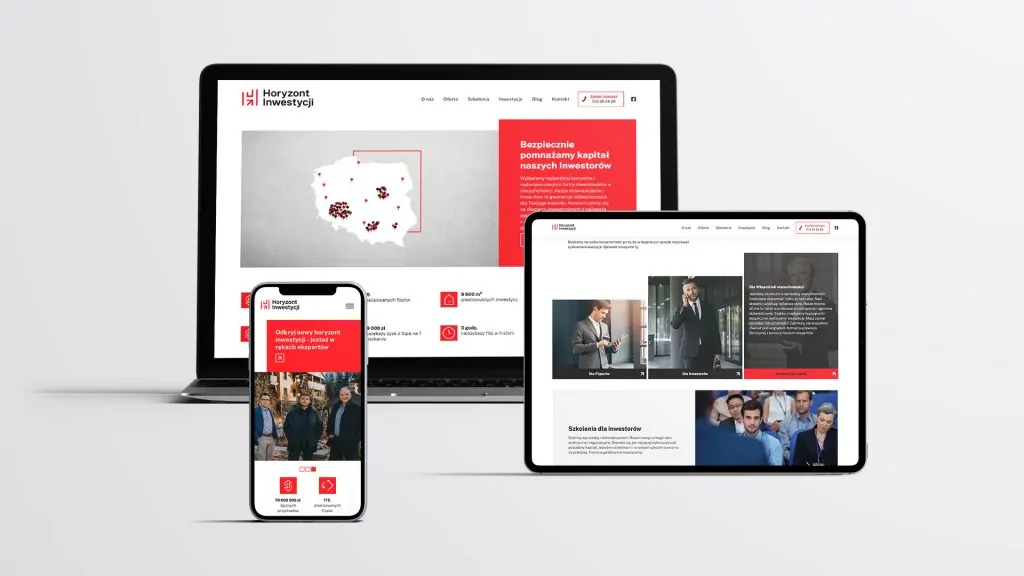Marketing instruments are tools used for more than just the customer acquisition process. The key word here is 'process' - marketing encompasses a series of activities that can help a company achieve its goals. And these can vary. How do marketing instruments help to acquire them? Let's find out.
- Basic marketing instruments
- 4P among marketing instruments
- Marketing tools
- Marketing tools
- Marketing instruments in the service market
- Marketing tools
- What to consider when choosing marketing instruments?
- How do marketing instruments build competitive advantage?
- Why combine traditional and digital marketing?
- How to use data in the synergy of marketing tools?
The company's objectives may include attracting, attracting and retaining customers, increasing sales and profits and/or enhancing brand image. Marketing instrumentse are changing along with marketing, which is a living and dynamic field. This is evidenced by concept evolution over time. However, the fundamental basis of marketing is still the 4P concept, on which every marketing campaign should be based. I guess every one public relations agency he will agree.
Which marketing instruments to use?
We will advise you on the best solution.
Basic marketing instruments
The 4P marketing mix concept, which originated more than 60 years ago, assumes that marketing consists of four basic elements. These are product (Product), price (Price), promotion (Promotion) and distribution (Place). Marketing can therefore, in the simplest terms, be defined as placing the right product in the right place, at the right price and at the right time. At first glance, this seems completely uncomplicated. In fact, it takes a lot of hard work to turn this simple definition into a success, and thus to apply the various marketing instruments. If even one element is misplaced, a promising product or service can turn out to be a complete dud and expose the company to significant costs.
Marketing instruments used in the right configuration is a great way to provide customers with the right product, properly priced, in the right place and time. The marketing mix is a key tool to help you understand what a product or service can offer and how to plan a successful product offering. Over the years, the 4P concept has been extended to include additional P. The 4C concept has also been developed, taking into account the consumer's point of view. Still, 4P is a great place to start product planning as well as evaluate your existing offering.
4P among marketing instruments
The first of the P's, in terms of marketing instruments, is product. This term applies to both goods and services offered by the company for sale. A pair of shoes, changing the wheels on the car, shampoo - these are all products. They are all purchased because they meet one or more of our needs. However, we pay not for the tangible product, but for the benefits it gives us. In simple words, a product can be described as a set of benefits that the seller offers the consumer at the right price. When we buy shoes, we are actually buying comfort for our feet. When paying for the wheel replacement service in the car, we pay for safety, because this is what we expect when driving on tires adapted to weather conditions. When you buy a shampoo, you pay for your beauty, because it will probably make your hair look good.
Marketing tools
The second P is price (Price) which is the amount charged for a product or service. This is the second most important element in the marketing mix. Pricing a product is a difficult task. Price positioning it requires taking into account many factors such as product demand, costs related to production and distribution, consumer's ability to pay, competitors' prices, etc. Pricing is a very important area for decision making as these have a large impact on the company's profitability.

Marketing instruments also take into account place/ location (Place), which are the third P in the concept of marketing mix. As goods are manufactured for sale to consumers, they must be made available to them in a place where they can conveniently shop. The coffee is made in Brazil and you buy it from the shop around the corner. The product must be easily accessible to customers. The company has to decide whether it will sell it, for example, through distributors / wholesalers, or perhaps directly to consumers.
Marketing tools
The aforementioned marketing instruments for full success they need a fourth element, which is P as in special offer. Imagine that the product is manufactured taking into account the needs of consumers. At the same time, it has the right price and is available at points of sale convenient for customers. Perfectly? Not entirely, because the consumer is not aware of its price, function, availability, etc. Without proper promotion, the company's marketing efforts may fail. Therefore, promotion is an important component of the marketing mix as it relates to the process of informing, persuading and influencing the consumer to make a choice and buy a specific product. The promotion is aimed at sales support, providing potential consumers with information about the availability, features and applications of the product. This is done, among others by public relationswhether by implementing strategies under online marketing.
Marketing instruments in the service market
Selling something that a potential buyer cannot touch, see, feel or hear makes marketing your services a unique challenge. Regardless of whether the company sells services to individual customers or other companies - using then b2b marketing – marketing instruments listed under the 4P concept need to be expanded. In response to a more complex distribution of services, the 4P concept was therefore extended to 7Ps. The added 3 P's are as follows:
– people (People) who have become the most important part of the marketing mix. Perhaps even more important than the product itself, according to the principle "you can have the perfect product, but without people who want this product and sell it, you have nothing";
Marketing tools
physical evidence Physical evidence refers to the tangible and intangible elements that make up the environment in which services are provided. Both influence customer feedback on the entire service. For example, a clean and comfortable interior in a restaurant can enhance customers' perception of the dining experience. The intangible aspects of service delivery - such as reputation and the opinion of other customers - are the elements of service marketing that affect how customers perceive them.

– process (Process), refers to all the activities a company undertakes to facilitate the provision of services. Efficient and effective processes allow a service company to anticipate customer needs. They help identify and implement appropriate solutions and respond to customer feedback to improve service delivery. Marketing instruments applied in this area can increase customer satisfaction, which is important in terms of customer lifetime value.
What to consider when choosing marketing instruments?
Markets often change faster than marketing. Properly understood, this has a strategic function and should drive the company's strategy. This applies to all products and services. Meanwhile, many companies operate on the basis of deeply ingrained practices, yet applied marketing instruments may not always have the desired effect. Product, price, place and promotion are useful building blocks in creating the right marketing mix that a company can use to strategically dominate its chosen target market. However, this does not mean that once implemented, the concept will always be effective. Every P carries with it a range of tools to achieve objectives, which, after all, change over time. It is what the company's objective is at any given time that determines which marketing instruments will best serve to achieve it.
How do marketing instruments build competitive advantage?
Marketing instruments play a key role in building a company's competitive advantage. Through the appropriate application of marketing instrumentssuch as product, price, distribution and promotion, a company can differentiate itself from its competitors. For example, unique product features or an attractive pricing policy can attract customers looking for added value. In addition, effective marketing toolssuch as advertising campaigns and public relations activities, increase brand recognition and build a positive brand image. As a result, the strategic use of marketing instruments allows you to build a sustainable competitive advantage in the market.
Why combine traditional and digital marketing?
Integration marketing tools traditional and digital brings numerous benefits to modern businesses. Combining offline activities, such as press adverts or leaflets, with online campaigns enables a wider audience to be reached. For example, a TV advertising campaign can be supported by social media activities, increasing its reach and effectiveness. In addition, basic marketing tools digital, such as email marketing and content marketing, allow you to personalise your message and build lasting relationships with your customers. Collaboration with marketing agency enables the effective combination of traditional and digital promotional tools, ensuring consistency of communication and maximising campaign impact.
How to use data in the synergy of marketing tools?
Data analysis plays a key role in optimising marketing instruments and achieving better results. With analytical tools such as Google Analytics, companies can monitor the effectiveness of their activities and adjust strategies based on real information. For example, analysing user behaviour on a website allows content to be optimised and offers to be better tailored to customers' needs. Furthermore, integrating CRM systems with marketing campaigns enables personalisation of communications and increased audience engagement. By using data strategically, companies can effectively combine different marketing tools and build a strong position in the market.

